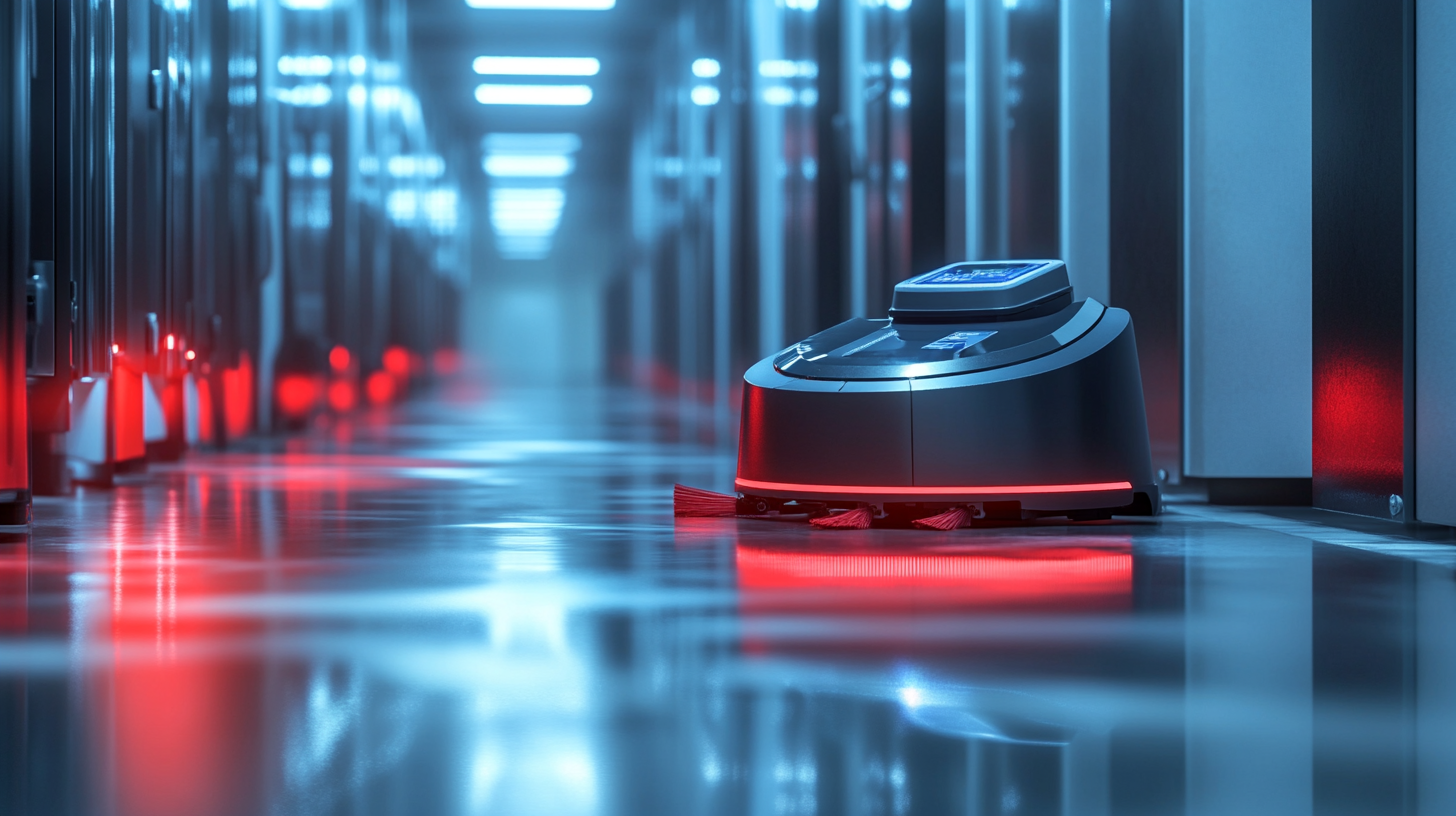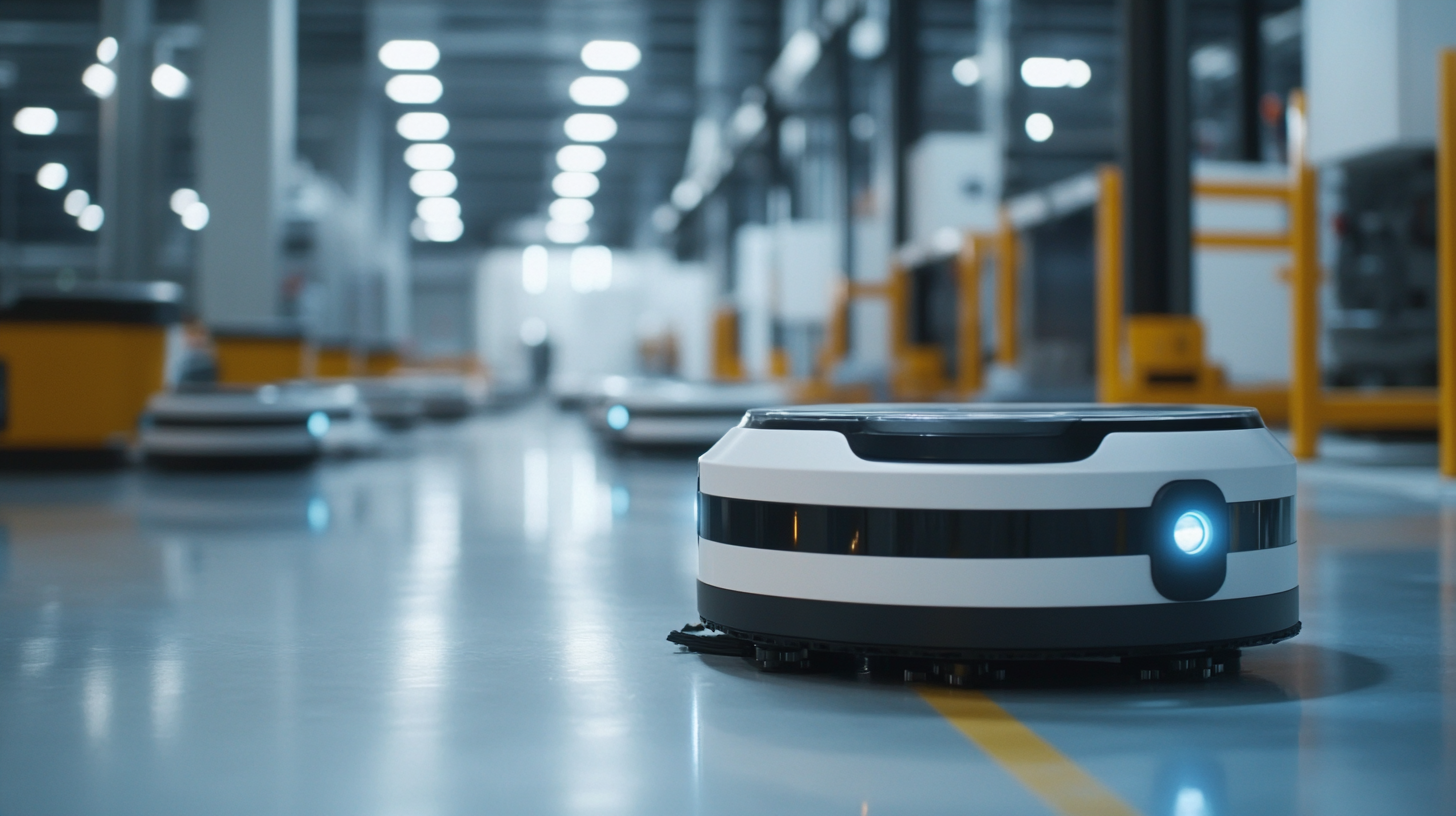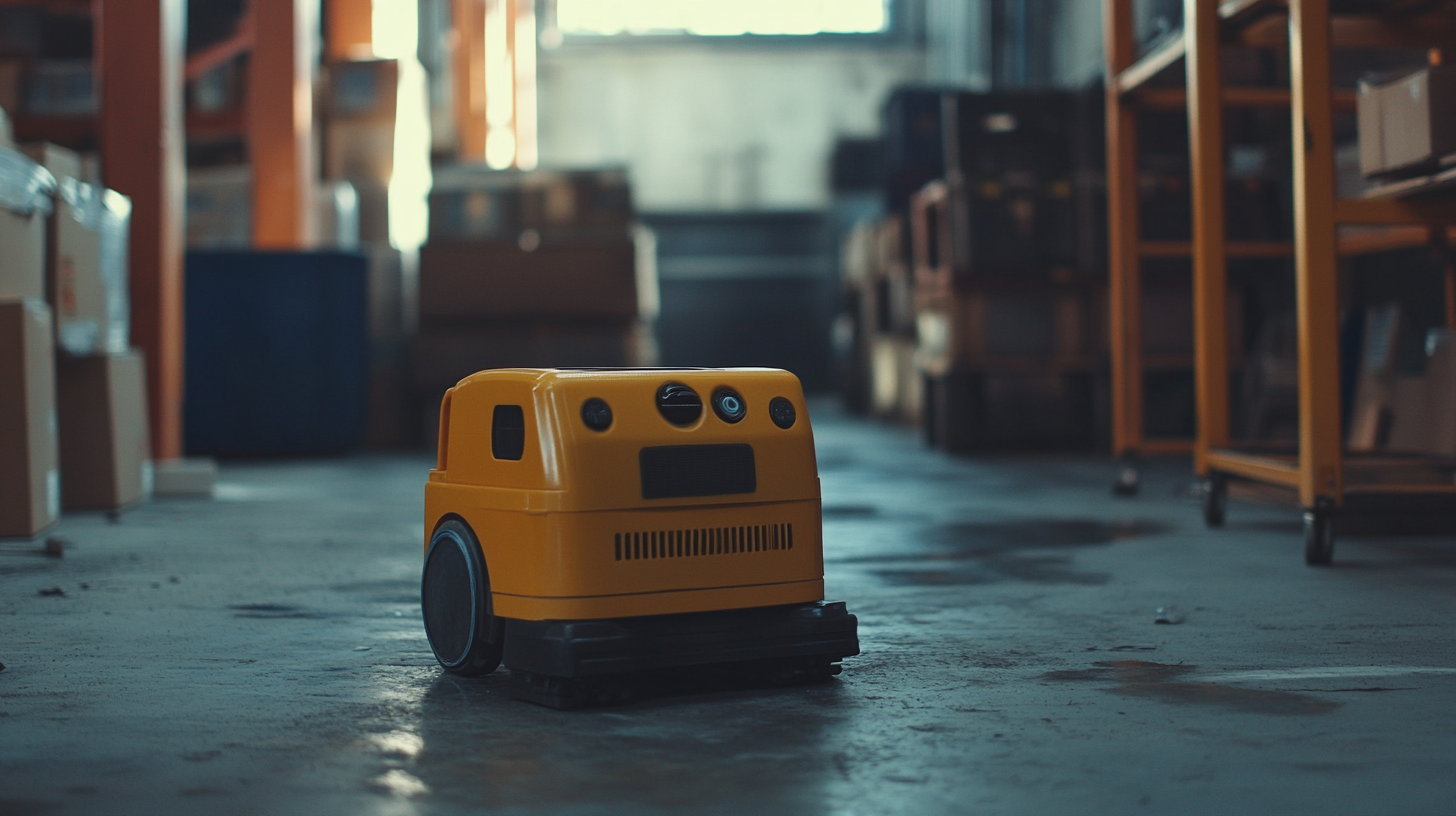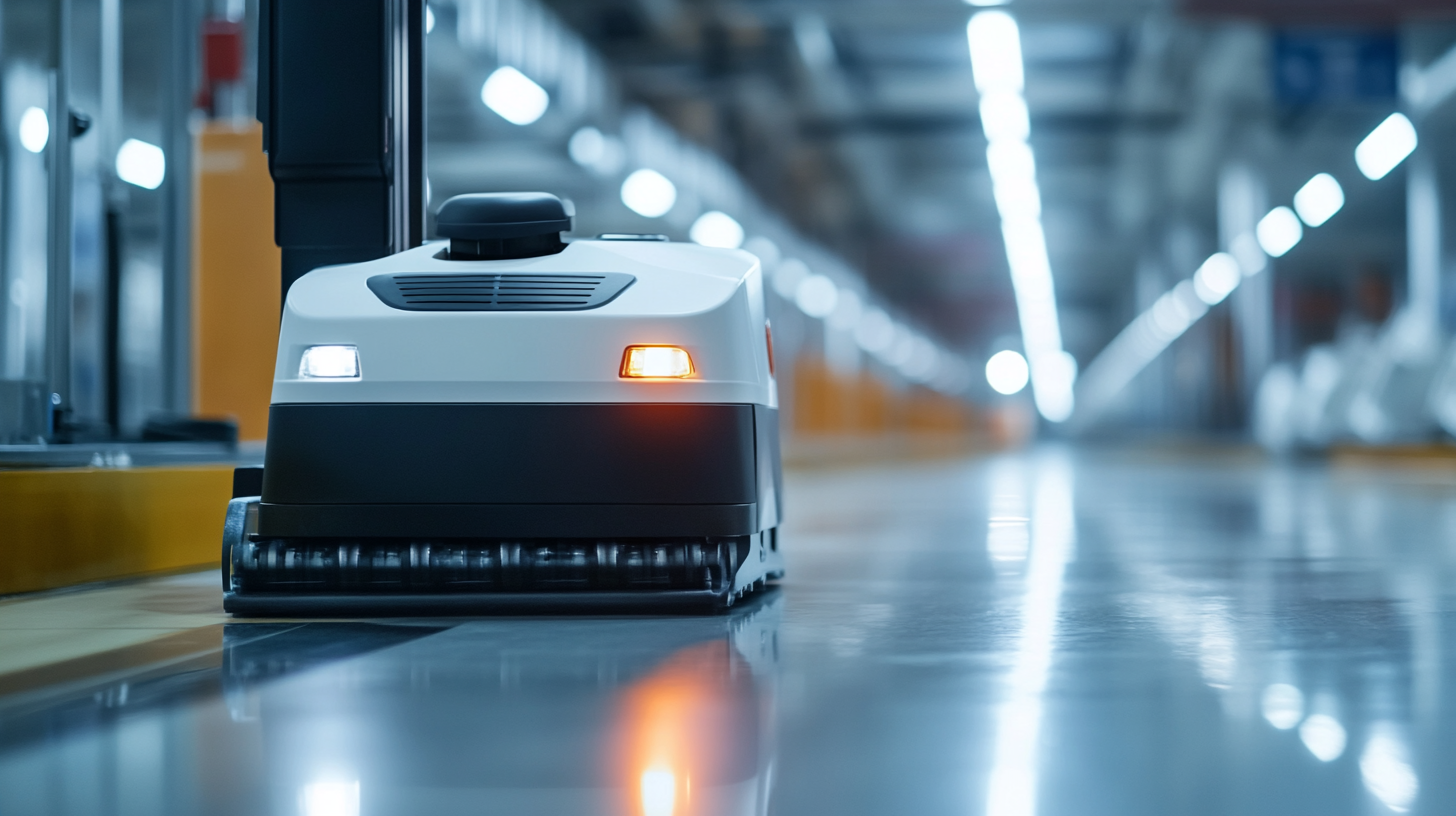

14, Raghava Enclave, Transport Road, Secunderabad, Hyderabad (500009)
©2024 All Rights Reserved by excitechrobot.com
In today's fast-paced business environment, efficiency and productivity are paramount, and one of the most effective ways to enhance these aspects is through the adoption of Cleaning Robots. According to a report by ResearchAndMarkets, the global market for cleaning robots is expected to reach $15.6 billion by 2027, with a compound annual growth rate (CAGR) of 18.5% from 2020 to 2027. This rapid growth highlights the increasing reliance on automated solutions in various sectors, underscoring that cleaning robots have transcended from being mere gadgets to essential tools for businesses aiming to maintain cleanliness while reallocating human resources to more critical tasks.
As the demand for cleaner, healthier environments continues to rise, companies are challenged to find the right cleaning solutions to meet their specific needs. A recent survey from Statista revealed that over 60% of businesses are now investing in automation technology, with cleaning robots at the forefront of this trend. However, with a plethora of options available, selecting the right cleaning robot that aligns with diverse operational requirements can be daunting. This guide aims to demystify the process of choosing the right cleaning robots for your business, ensuring you leverage the benefits they offer in maximizing efficiency and maintaining a pristine workspace.

When considering cleaning robots for your business, it's essential to understand the various types available on the market. Each type serves a specific purpose and is designed to tackle different cleaning tasks, ensuring that your facility remains pristine. Let's explore some of the most common options. Firstly, autonomous vacuum robots are a popular choice for many businesses. These robots are equipped with advanced sensors and navigation systems, allowing them to efficiently clean floors without human intervention. Ideal for maintaining large areas like warehouses or offices, these robots can seamlessly operate on different surfaces, including carpets and hard floors, providing a consistent level of cleanliness throughout the day. In addition to vacuum robots, there are specialized cleaning robots designed for more specific tasks. For instance, floor scrubbers are engineered to handle tough grime and stains on hard surfaces. They combine scrubbing brushes and powerful suction, making them perfect for environments such as restaurants, hospitals, or industrial settings. These robots not only save time and labor costs but also ensure a deep clean that might be challenging to achieve manually. Lastly, window cleaning robots are gaining traction among businesses looking to maintain their facade's cleanliness effortlessly. These devices are designed to safely and effectively clean windows, even those in hard-to-reach places. By investing in a window cleaning robot, your business can improve its aesthetic appeal while minimizing the risk and cost associated with hiring external cleaning services. With a range of options at your disposal, selecting the right cleaning robot can significantly enhance your operational efficiency.

When selecting the right cleaning robots for your business, it's essential to focus on key features that will enhance efficiency and effectiveness. One of the standout features to consider is navigation technology. Advanced robots utilize LiDAR or visual mapping systems to accurately scan and navigate their environment. This ensures thorough cleaning by effectively avoiding obstacles and optimizing cleaning routes, which is especially vital for larger commercial spaces.
Another crucial aspect to evaluate is the robot's cleaning capabilities. Look for models that offer versatile cleaning modes, including vacuuming, mopping, and even scrubbing. These multifunctional robots can cater to various surfaces, from carpets to hard floors, providing a comprehensive cleaning solution. Moreover, check for the suction power and the type of brushes used, as these directly affect the robot's ability to pick up dirt, dust, and debris efficiently.
Battery life and charging options also play a significant role in the selection process. A robot with extended battery life can cover larger areas without interruptions, while smart charging capabilities allow for automatic docking and recharging when the battery runs low. Additionally, consider the robot's connectivity features, such as remote control via smartphone apps or integration with existing building management systems, as these elements can significantly enhance operational flexibility and monitoring.

When evaluating the cost-effectiveness of cleaning robots for your company, it's essential to analyze both the initial investment and the long-term savings they can provide. According to a report by the International Journal of Industrial Engineering and Management, businesses can save up to 30% on labor costs by integrating cleaning robots into their operations. This significant reduction arises from decreased reliance on manual cleaning staff, allowing personnel to focus on more strategic tasks.
Moreover, a study by MarketsandMarkets reveals that the global market for cleaning robots is anticipated to grow from $2.3 billion in 2021 to over $4.5 billion by 2026, highlighting the increasing adoption of these technologies. The initial purchase of a cleaning robot can range from $2,000 to $10,000, depending on the model and features. However, the ROI can be realized within the first year due to lower operational costs. For instance, robotic vacuum cleaners can operate autonomously during off-peak hours, which further minimizes disruption and increases productivity in your workspace.
Additionally, maintenance costs for cleaning robots are minimal compared to traditional cleaning methods. According to research from the Robotics Industry Association, companies can expect to spend approximately 20% less on maintenance and operational efficiency with robots, as they typically require simpler upkeep. This means that over a few years, the cumulative savings can be substantial, reinforcing the argument for their cost-effectiveness in a business setting.

Integrating cleaning robots into your existing cleaning workflow can significantly enhance efficiency and productivity in your business. Before launching the integration process, it's essential to assess your current cleaning operations and identify areas where automation can provide the most benefit. Consider factors such as the size of the workspace, the frequency of cleaning tasks, and specific cleaning challenges. This awareness sets the foundation for a seamless incorporation of robots into your routine.
Once you have determined the most suitable areas for automation, the next step is to choose the right cleaning robots that complement your cleaning needs. Look for robots equipped with advanced features such as mapping capabilities, real-time monitoring, and easy-to-use management software. These features not only allow robots to work autonomously but also enable your team to track performance and address any issues promptly. Training your staff on how to interact with these machines is crucial; they should understand both how to operate the robots and how to troubleshoot minor problems.
After the robots are in place, it's important to monitor their performance and continuously refine your cleaning workflow. Use feedback from your cleaning team to identify any bottlenecks or challenges that arise with the new system. This ongoing evaluation will help you optimize the robot's schedule, ensuring that they work in harmony with your human cleaners rather than replacing them. By fostering collaboration between traditional cleaning methods and robotic assistance, you will create a more effective and responsive cleaning environment tailored to your business needs.
When selecting cleaning robots for your business, maintenance and support are critical factors that can significantly impact the efficiency and longevity of your investment. According to a report by the International Federation of Robotics, the market for cleaning robots is expected to grow at a CAGR of 25% over the next five years, indicating a strong reliance on automated solutions in various industries. This growth makes it essential for businesses to consider how maintenance routines will be managed to sustain operational effectiveness.
Maintenance requirements can vary widely across different models and brands of cleaning robots. A study by Allied Market Research highlights that up to 30% of robotic cleaning device users experienced downtime due to inadequate maintenance support. Businesses should ensure that the cleaning robots they choose not only come with detailed maintenance guides but also offer easy access to customer support. Availability of parts and local service technicians can significantly decrease the time a robot is out of operation, which is critical for maintaining cleanliness standards in commercial environments.
Another important consideration is the availability of software updates and technical support. As technology rapidly evolves, the performance of cleaning robots can be enhanced through regular updates, improving algorithm efficiency and introducing new features that improve overall cleaning results. A recent survey indicated that businesses that utilized robots with comprehensive support services reported a 40% increase in operational productivity, as these features often lead to smarter, more adaptive cleaning methodologies that save time and resources.
